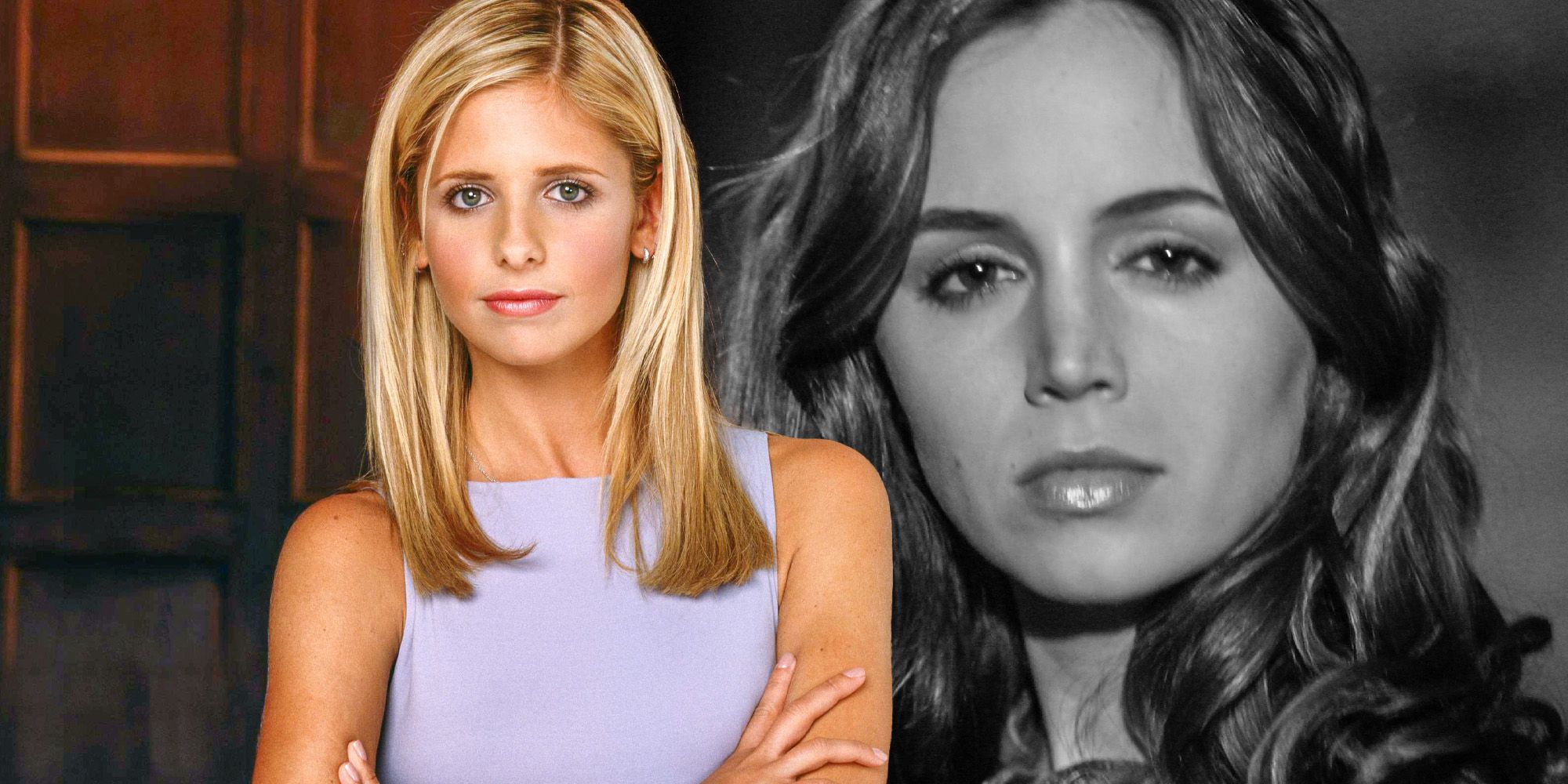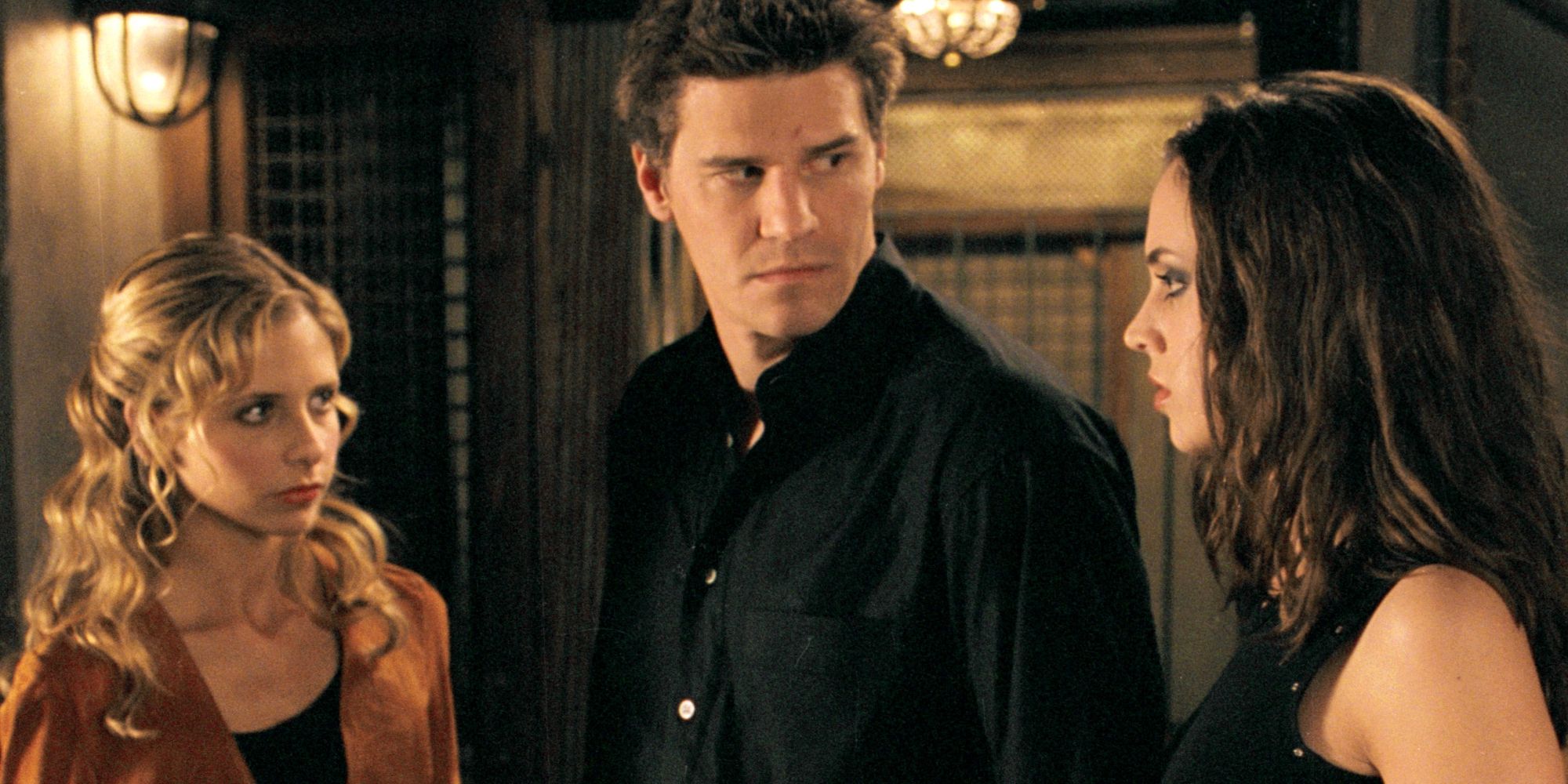Buffy the Vampire Slayer’s original plan for Faith Lehane would have been much worse. One of the many reasons that Buffy has endured as a seminal piece of pop culture is thanks to its memorable line-up of villains, from Spike and Drusilla to The Mayor, but Faith was particularly noteworthy as she was introduced as an ally to the show’s protagonists.
Portrayed by Eliza Dushku, Faith made her debut in season 3, episode 3, “Faith, Hope & Trick”, and she’s revealed to be the new slayer that gets called in the aftermath of Kendra’s death. Faith is almost immediately contrasted with Buffy (Sarah Michelle Gellar) due to her often nonchalant and even reckless attitude. But, as the season progresses, the two begin to form a fraught but intense connection. This relationship would form the basis for Dushku’s character to shift into an antagonist, siding with The Mayor and proving to be an immensely difficult adversary for Buffy to square off against. Perhaps more important than Faith’s initial arc is the impact she had on season 4 of Buffy, as well as the spin-off series, Angel. However, if series creator Joss Whedon stuck to his original plan for Faith, she likely wouldn’t have such a lasting mark on the legacy of the Buffyverse.
In Whedon’s original vision for Faith, she would have been written off Buffy in a very dark and depressing way. The plan was for Dushku to guest star in five episodes. After accidentally killing Deputy Mayor Allan Finch (Jack Plotnick) in season 3, episode 14, “Bad Girls”—mistaking him for a vampire—she would have committed suicide. Because Dushku impressed Whedon with her performance as Faith, he decided to change course for the character. The accidental death of Allan Finch instead became a breaking point which led Faith to join forces with The Mayor, rather than the event which would have led to her tragic suicide.
In some ways, Whedon’s initial objectives with Faith make a lot of sense. The purpose of the character, in those early season 3 appearances was to shed a light on the dark side of being a slayer in an effort to point out the contrast among different slayers in the slayer line. This is a point the show’s writers would revisit on more than one occasion. However, it’s difficult to imagine that Faith’s suicide would have been all that significant in the long haul. She might have been mourned for a handful of episodes, but likely would have been gradually forgotten once more pressing plot developments started coming into focus. In any case, Faith would have been a minor footnote in the history of the Buffyverse rather than an absolute force of nature that changed the course of a season whenever she popped up on screen.
This was the case when Faith returned for two episodes of Buffy in season 4, giving the drama a jolt with an excellent a two-parter that featured the two slayers switching bodies. It was especially true when Dushku moved on to Angel, helping the new spin-off find its footing as writers crafted an emotional storyline which revolved around Faith and Angel (David Boreanaz) trying to seek redemption for their past actions. Dushku would later return for Buffy season 7, in addition to Angel season 4, with the purpose of offering the character a measure of closure.
Faith proved popular enough that, when Buffy ended, a spin-off was considered for the character. In her long career, Dushku has built up an impressive filmography that includes prominent roles in franchises such as Wrong Turn and Bring It On. However, for many fans, her stint on Buffy the Vampire Slayer still counts as her best work. It’s a good thing that Whedon saw Dushku’s potential early on and allowed her character to evolve.


